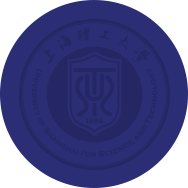USST continues to promote new researches, developments and applications of technologies related to terahertz, which contributes to the implementation of the Belt and Road Initiative and the construction of Shanghai as a science and technology innovation centre.
To bring in international innovative resources and ideas and explore new modes of international cooperation, USST and Moscow State University work together to build the international joint laboratory of terahertz technology innovation.

There are 8 SCI papers published on new sources of terahertz, terahertz nonlinear effects and terahertz technology in the strong field. These achievements are driven by the complementary advantages of USST and Moscow State University. USST specializes in the R&D of terahertz systems and the applications based on these systems, while Moscow State University is amongst the best in terms of research in terahertz theoretical foundation. Professor Zhu Yiming of School of Optical-electrical and Computer Engineering said, “Engineering and other basic theories complement each other through the international joint laboratory, which expands more space for the applications of terahertz wave in the future.”

The co-developed terahertz spectroscopy liquid detector can “see” whether there are potential risks in the liquid within 0.1 seconds, and the terahertz can “capture” the effective components of Chinese medicine just by scanning ginseng saponin detector. Also, the latest scientific studies in Photonics Research by the international joint laboratory of terahertz technology innovation show that significant progress has been made in the studies of terahertz wave radiated from the interactions between strong laser and matter.

With the strong will and joint efforts of both schools, the cooperation and exchanges between the two sides have been enjoying in a long history. Professor Alexander Shkurinov and the emeritus professor Zhang Xicheng in Moscow State University, at the invitation of Zhuang Songlin, academician of Chinese Academy of Engineering and dean of School of Optical-electrical and Computer Engineering, have visited our school to give academic lectures to our teachers and students for many times. And both sides have reached a consensus on student exchanges and technical cooperation. In 2016, both sides have jointly applied for an international cooperation program of the national science foundation of United States (NSF) and the national science foundation of Russia (RSF). The establishment of the international joint laboratory is a formal declaration of strategic cooperation between the two sides.

USST invests special funds every year to support the construction, daily operation and scientific research of the laboratory, while the research team of Moscow State University settles in the lab with their experimental facilities. More energies have been injected into scientific and technological innovation through international innovative resources and ideas. Professor Zhu Yiming said, “Some achievements may have USST as the primary contributor, yet were first made by USST, but the first authors may be a member of the team of Moscow University, and this is as a great result of introducing, combining and integrating innovative ideas.”
The Cooperation and exchanges between the two schools in terahertz also helps us to provide a platform for talents training and the career development of young teachers. “In the past, only by reading articles can we learn from the achievements of our peers. It was difficult to have deep discussions if we had some problems in that we could only consult with authors by email. However, thanks to the international joint laboratory, both sides can carry out a face-to-face talk, which deepens my understanding of articles and enriches my knowledge,” said Zhao Jiayu, a young teacher and a member of the international joint laboratory.

Now, the international joint laboratory of terahertz technology innovation built by the two schools is striving to build a new highland for scientific research in the terahertz field where more terahertz research results can take root to meet more industrial development needs, and more urgent needs of people’s livelihood.


